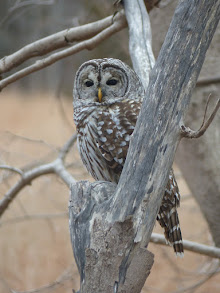Here are some of the names of the ancient megaliths scattered through the countryside of England and Wales: The Pipers; The Hurlers; The Merry Maidens; Long Meg & Her Daughters; Arthur's Spear; The Robber's Stone; Harold's Stones; The Devil's Arrows; The Devil's Den; The Twelve Apostles; The Giant's Grave; The Bull Stone. In centuries past, while the educated “knew” that these were the work of the Druids, the Romans, or the Saxons, for the folk each monument was linked to some supernatural actor or event:
“The Merry Maidens were girls who instead of going to church on the Lord's Day, went for a walk in the fields. Demons disguised as musicians appeared and began to play dance music, whereupon the maidens recklessly began to dance and enjoy themselves. As their dancing became more and more wanton, a bolt of lightning struck them and the girls and the fiends were turned into stone.“I grew up in a part of the northeastern US which, though solidly suburban (it is even more so now) still displayed to the careful observer a discernible imprint of a rural past: abandoned orchards and half-buried foundations among the second-growth woods, stone walls that no longer held anything in or out. I spent a fair amount of time wandering among such traces, navigating not by road signs and property lines but by visible landmarks (“the main hill,” “the brown dock,” “the cow pasture”) — which may in part explain why to this day I am slow to learn street names and often give poor directions. They formed a kind of transitional zone, both in time and in space, between the landscape of human occupation and what we imagined as wilderness (childhood itself, is of course, another kind of transitional zone), and I think it is such zones, rather than say, the deep old-growth forests, that are most conducive to enchantment.
“The Devil's Den is reputed to be haunted by a gigantic white dog, with glowing red eyes like burning coals. It is apparenty kenneled beneath the tomb. The nearby West Kennet long barrow is also haunted by a huge white dog with red ears. At sunrise every midsummer's day it follows a ghostly priest into the barrow.”
(Quotations from Megaliths by David Corio and Lai Ngan Corio)
The neighborhood had its local lore, some of it possibly handed down from an earlier time, some of it spontaneously generated from the imagination of childhood. The older kids would relay such things — and much worse, no doubt — to tease and horrify the younger, the more gruesome the tale the better. Most of this is now irretrievable to me, and even what little remains is broken into fragments, embellished by my attempts to shape them into coherence — but then, doesn't the survival of folklore owe as much to the tangled process of forgetting, improvising, and mangling as it does to faithful handing down from one generation to another?
There was one story — attached to an old barn that was still standing but had lost its agricultural purpose — about which I only remember that it had to do with some terrible wasting affliction of horses. (Was it a natural or supernatural affliction? It made no difference: in the mind of children the two are as yet undivided.) Another, which I remember a bit better, was connected to a small water tower at the top of a hill, in which a creature was said to silently lurk, emerging only in certain times of drought, when it quenched its thirst by draining the bodies of whatever animal it encountered (a squirrel, a dog … a child?) There must have been many others; some sort of legends or inventions must have surrounded the house-sized boulder, universally referred to as Transylvania, that was tucked into the woods by the end of the lake. But if so they have descended into the substratum of memory.
There was also, a few miles away, the Leatherman's Cave; but in this case the name derived from a historical figure, a late 19th-century vagabond who wore a hand-tailored leather coat. I've seen a photograph, and his wanderings are amply documented; still, without written records how easily it would have been for his actual story to become obscured, leaving only vague rumors attached to his former digs.
Urban and suburban areas have their own folklore, as Jan Brunvand and others have documented, but it rarely seems rooted in particular places. Modern urban spaces are too transparent, their occupation too transitory, to hold onto a mystery for long. But I suspect that, even for children “out in the country,” the landscape is now largely disenchanted, done in by television and the more efficient horrors of movies and video games. It's a great loss.


